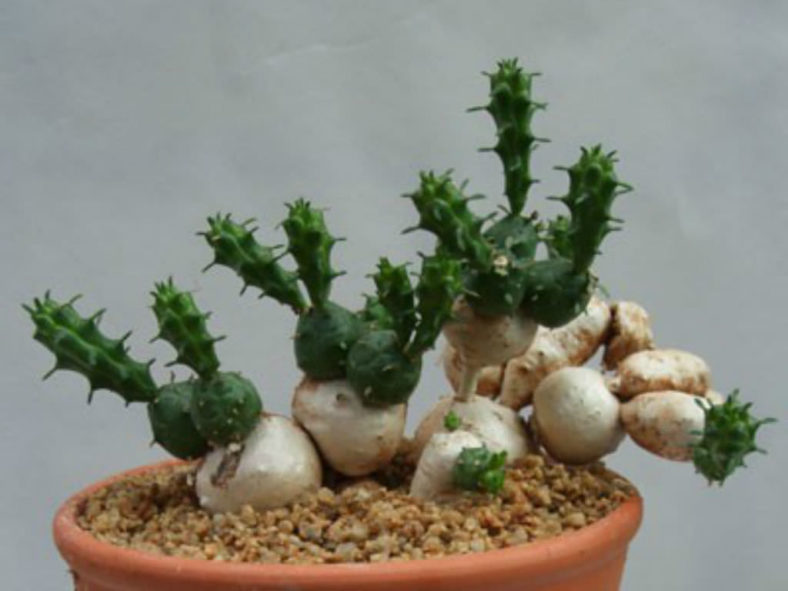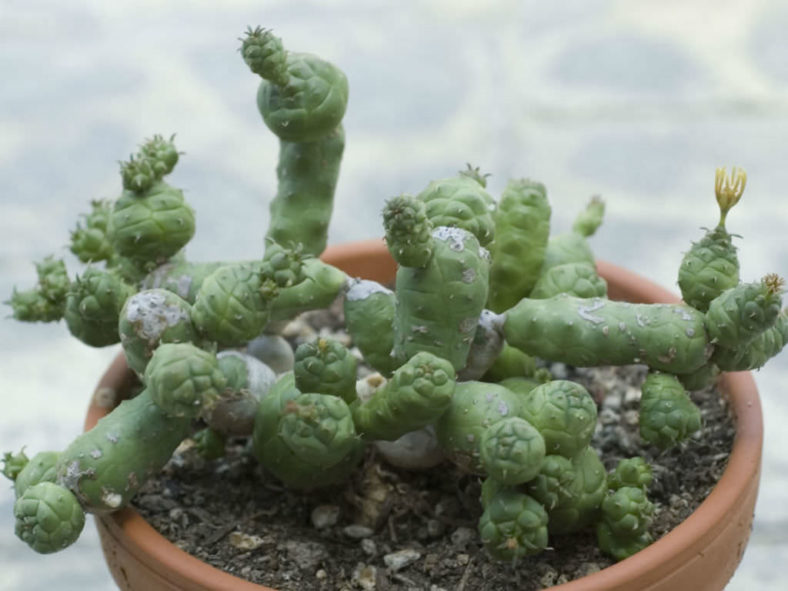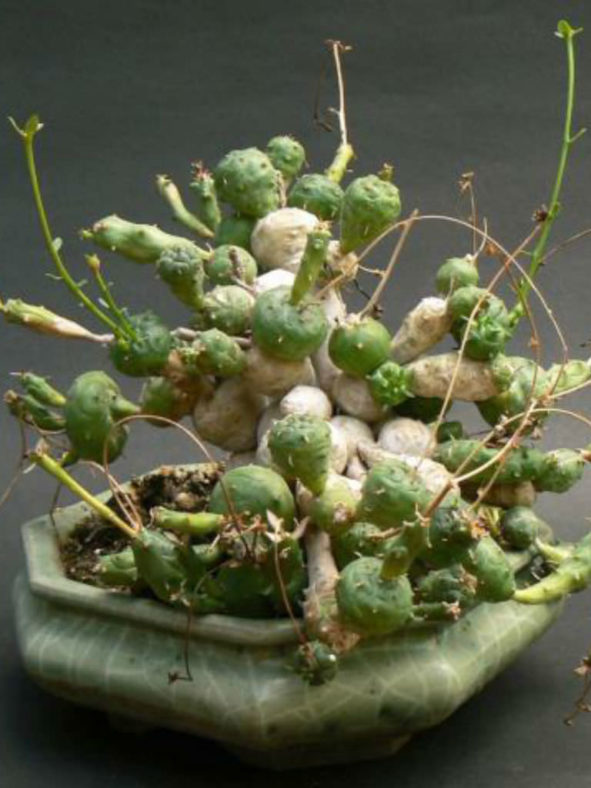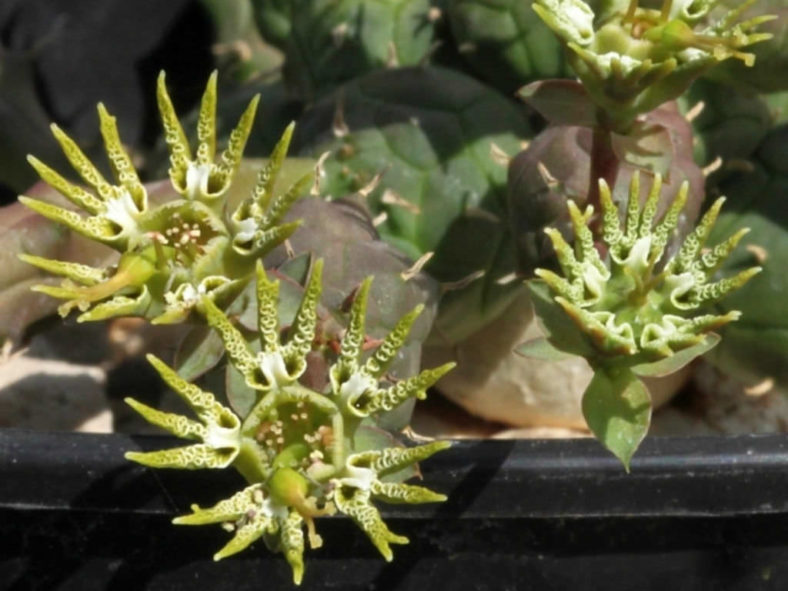Scientific Name
Euphorbia globosa (Haw.) Sims
Common Name(s)
Globose Euphorbia, Globose Spurge, Roundish-jointed Spurge
Synonym(s)
Dactylanthes globosa, Euphorbia glomerata, Medusea globosa
Scientific Classification
Family: Euphorbiaceae
Subfamily: Euphorbioideae
Tribe: Euphorbieae
Subtribe: Euphorbiinae
Genus: Euphorbia
Etymology
The specific epithet "globosa" (pronounced "glo-BOH-suh") means "spherical, globular" and refers to the shape of the stem segnemts of this species.
Origin
Euphorbia globosa is native to South Africa (Eastern Cape Province). It grows in karroid scrub in gravelly flat areas from Uitenhage (officially renamed Kariega) to Port Elizabeth in Eastern Cape province.
Description
Euphorbia globosa is a dwarf succulent with many more or less globular, spineless, densely packed stem segments that grow from a swollen base. It can grow up to 3.2 inches (8 cm) tall, branching from the base and forming a cushion over time. The stem segments can measure up to 1.6 inches (4 cm) long and 1.2 inches (3 cm) in diameter. The flowering stems are club-shaped with low, conical tubercles arranged in 5 obscure rows. They can grow up to 2.4 inches (6 cm) long and 0.6 inches (1.5 cm) in diameter. The deciduous leaves are lance-shaped, measuring up to 0.12 inches (3 mm) long.
The cyathia, which can be solitary or occur in groups of up to three, are cream-colored and pale green and appear on long, thin stalks in spring. They can reach a diameter of 0.8 inches (2 cm) and comprise several reduced male flowers encircling the female flower.

How to Grow and Care for Euphorbia globosa
Hardiness: USDA hardiness zones 9b to 10b: from 25°F (-3.9°C) to 40°F (4.4°C).
Euphorbias are very easy to care for. These plants require a little pampering to become established, but once they are, they are self-sufficient. More die from overcare and overwatering than from neglect. Euphorbias need well-draining soil and lots of sunlight. They are not particular about soil pH, but cannot tolerate wet soil. Unlike most succulents, Euphorbia does not tolerate long periods of drought. It may need weekly watering during the summer. Water whenever the soil is dry several inches below the surface. Water deeply, but don't let them sit in wet soil, which can cause root rot. Add some organic matter or fertilizer to the planting hole. Feed with a half-strength fertilizer monthly if you are growing them in containers or if your soil is poor.
These succulents can be grown from seed, but germination can be tricky (or the seeds are even hard to find). They are usually propagated by cuttings. This can be tricky because of the exuding sap. A rooting hormone is recommended with Euphorbia. They tend to grow problem-free, but there are a few pests and diseases to be alert for.
Learn more at How to Grow and Care for Euphorbia.
Links
- Back to genus Euphorbia
- Succupedia: Browse succulents by Scientific Name, Common Name, Genus, Family, USDA Hardiness Zone, Origin, or cacti by Genus
Photo Gallery
Click on a photo to see a larger version.


